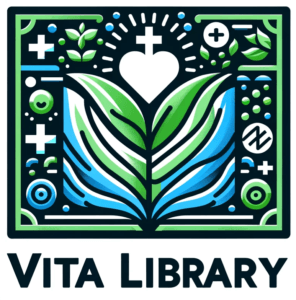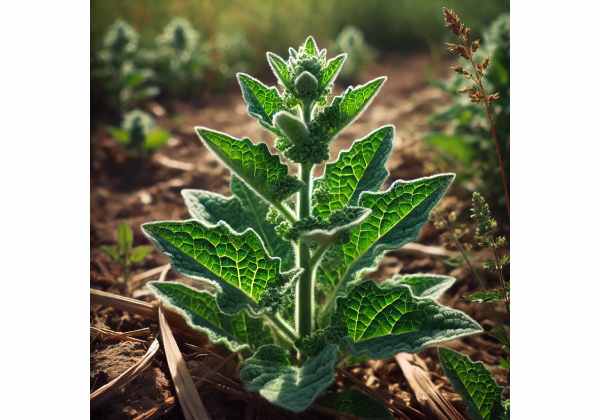Lamb’s Quarters is a nutrient-dense wild green, renowned for its exceptional vitamin and mineral content along with potent antioxidants that support overall wellness. This herb contains bioactive compounds such as carotenoids, flavonoids, and essential vitamins that contribute to improved digestion, enhanced immune function, and cardiovascular support. Additionally, Lamb’s Quarters offers culinary versatility as a salad green and cooked vegetable. Its historical use in traditional medicine further underlines its health-promoting properties. In this article, we delve into its botanical identity, phytochemical makeup, health benefits, practical applications, and recent scientific research, providing a comprehensive resource for enthusiasts and health-conscious readers alike.
Table of Contents
- Distinctive Botanical Insights and Identification
- Core Phytochemical Constituents and Active Agents
- Comprehensive Health Advantages and Intrinsic Properties
- Versatile Applications and Usage Precautions
- Notable Research Milestones and Scientific Discoveries
- Common Queries and Expert Answers
Distinctive Botanical Insights and Identification
Lamb’s Quarters, botanically known as Chenopodium album, is a widely distributed wild annual plant that has earned its reputation both as a nutritious edible green and as a common garden weed. Native to Europe and Asia, this plant has successfully spread across North America and other continents, adapting readily to diverse environmental conditions. The plant belongs to the Amaranthaceae family—a group well-known for its hardy species that thrive in nutrient-rich soils and moderate climates.
Morphological Features and Growth Characteristics
Lamb’s Quarters is easily recognized by its mealy, powdery leaves, which give the foliage a slightly silvery appearance. The leaves are typically triangular to diamond-shaped with scalloped edges, and they display a vibrant green color when young. As the plant matures, a white, farinose coating may develop on the leaf surfaces, which not only provides a distinctive texture but also acts as a natural barrier against excessive moisture loss. The stems are slender and erect, supporting a branching habit that results in a bushy appearance.
The plant produces small, inconspicuous flowers that are usually greenish or reddish in hue. These flowers are arranged in tight clusters and, while not showy, play an important role in the reproductive cycle of Lamb’s Quarters. The seeds, which are minute and abundant, facilitate rapid propagation—a factor that contributes to its reputation as a persistent weed in cultivated gardens. However, despite its invasive potential in some settings, its high nutritional value has led to its cultivation and harvesting as a leafy vegetable in many regions.
Habitat and Cultivation
Lamb’s Quarters thrives in disturbed soils, making it a familiar sight along roadsides, in agricultural fields, and in garden margins. It favors well-drained, fertile soils enriched with organic matter and prefers full sun exposure to partial shade. Although it can tolerate a range of conditions, optimal growth is typically observed in temperate climates where moderate temperatures and consistent moisture levels prevail. Gardeners and foragers alike prize Lamb’s Quarters not only for its hardiness but also for its rapid growth cycle, which allows multiple harvests within a single growing season.
In controlled cultivation, Lamb’s Quarters can be grown from direct seeding. The seeds germinate quickly—often within 7 to 10 days—provided that the soil temperature remains within an ideal range of 15°C to 25°C (59°F to 77°F). Its vigorous nature means that regular thinning is recommended to prevent overcrowding, which can lead to competition for nutrients and reduce overall yield. Additionally, organic fertilizers and compost can be used to enhance soil fertility, further boosting the nutritional quality of the harvested leaves.
Historical and Cultural Significance
Historically, Lamb’s Quarters has been consumed as a food source for centuries. It appears in numerous culinary traditions around the world, particularly in rural areas where foraging was a common practice. Early records suggest that during times of famine, the plant served as an essential source of vitamins and minerals. In various folk medicinal practices, it was believed to aid digestion, reduce inflammation, and promote wound healing. Over time, modern science has validated many of these traditional uses, contributing to a resurgence of interest in this humble yet potent herb.
Ecological Role and Sustainability
Beyond its nutritional and medicinal applications, Lamb’s Quarters plays a significant ecological role. Its ability to thrive in disturbed soils makes it an effective pioneer species in the natural reclamation of degraded lands. By establishing itself quickly, it helps stabilize the soil and reduce erosion, thereby contributing to ecosystem resilience. Moreover, its prolific seed production ensures that it can rapidly colonize areas, providing ground cover and supporting local biodiversity. Sustainable harvesting practices encourage its use as a renewable resource that benefits both human health and the environment.
In summary, Lamb’s Quarters is much more than a mere weed; it is a robust, adaptable plant with a rich botanical heritage and numerous practical applications. Its distinctive morphological traits, rapid growth cycle, and ecological contributions have solidified its status as both a valuable food source and a subject of scientific interest. Whether found in the wild or cultivated in a garden, Lamb’s Quarters continues to captivate botanists, chefs, and health enthusiasts with its blend of resilience and nutritional excellence.
Core Phytochemical Constituents and Active Agents
Lamb’s Quarters boasts a complex array of bioactive compounds that contribute to its diverse health benefits. Its phytochemical profile is a testament to the power of nature’s design, combining essential vitamins, antioxidants, and trace elements that work synergistically to promote well-being. Below is an exploration of the key active constituents found in Lamb’s Quarters:
- Vitamin A and Beta-Carotene
Lamb’s Quarters is notably high in beta-carotene, a precursor to vitamin A, which is essential for maintaining healthy vision, skin, and immune function. Beta-carotene’s antioxidant properties help neutralize free radicals, reducing oxidative stress and supporting cellular repair processes. - Vitamin C
A potent antioxidant, vitamin C is abundant in Lamb’s Quarters. It plays a vital role in collagen synthesis, bolsters the immune system, and enhances the absorption of non-heme iron. Its water-soluble nature ensures that it is quickly assimilated into the bloodstream, offering immediate health benefits. - Flavonoids
This group of polyphenolic compounds, including quercetin and kaempferol, is present in significant amounts. Flavonoids contribute to the herb’s anti-inflammatory and cardioprotective effects, as well as promoting healthy blood vessel function and reducing the risk of chronic diseases. - Minerals (Calcium, Iron, and Magnesium)
Lamb’s Quarters is a rich source of essential minerals. Calcium supports bone health and muscle function, iron is crucial for oxygen transport in the blood, and magnesium plays an integral role in enzyme function and energy production. This combination helps maintain overall bodily function and vitality. - Dietary Fiber
The plant’s high fiber content aids digestion, supports gut health, and promotes regular bowel movements. Soluble and insoluble fibers work together to regulate blood sugar levels and lower cholesterol, contributing to cardiovascular wellness. - Carotenoids
Beyond beta-carotene, other carotenoids present in Lamb’s Quarters, such as lutein and zeaxanthin, support eye health by protecting the retina from oxidative damage. These compounds also play a role in reducing the risk of age-related macular degeneration. - Saponins and Phytosterols
These compounds have been identified for their potential cholesterol-lowering properties and ability to support immune modulation. Saponins, in particular, may help in reducing inflammation and improving overall metabolic health.
Each of these constituents is intricately involved in a network of biochemical pathways that enhance the herb’s health-promoting capabilities. The antioxidant properties of vitamins A and C, combined with the anti-inflammatory effects of flavonoids, create a robust defense mechanism against cellular stress. The minerals and fibers further complement these actions by supporting structural and metabolic functions within the body. Together, these compounds underscore why Lamb’s Quarters has been valued not only as a food source but also as a natural remedy in traditional medicine.
Moreover, emerging research suggests that the bioavailability of these compounds can be enhanced by consuming Lamb’s Quarters in its fresh form, ensuring that the nutritional benefits are maximized. The synergistic effects of these phytochemicals make Lamb’s Quarters a standout ingredient in diets aimed at promoting longevity and disease prevention. Its impressive phytochemical profile positions it as a superfood with potential applications in both culinary arts and nutritional therapy.
Comprehensive Health Advantages and Intrinsic Properties
The consumption of Lamb’s Quarters offers a wide array of health benefits, making it an increasingly popular addition to contemporary diets. Its rich nutritional profile, combined with bioactive phytochemicals, contributes to numerous positive effects on overall health. Here are some of the most notable advantages and intrinsic properties associated with Lamb’s Quarters:
Antioxidant and Anti-inflammatory Support
Lamb’s Quarters is loaded with antioxidants such as beta-carotene, vitamin C, and flavonoids. These antioxidants help to neutralize free radicals—unstable molecules that can cause cellular damage and contribute to chronic diseases. By reducing oxidative stress, the herb supports the body’s natural defenses against inflammation and aging. The anti-inflammatory properties are particularly beneficial for individuals with conditions such as arthritis or cardiovascular disorders, where chronic inflammation plays a key role.
Enhanced Digestive Health
One of the standout features of Lamb’s Quarters is its high dietary fiber content. Fiber is essential for maintaining a healthy digestive system, as it aids in the regulation of bowel movements and promotes a balanced gut microbiome. This contributes to better nutrient absorption and can help prevent digestive disorders such as constipation and irritable bowel syndrome (IBS).
Cardiovascular Benefits
The combination of antioxidants, flavonoids, and minerals found in Lamb’s Quarters supports cardiovascular health. By promoting healthy blood vessel function, reducing cholesterol levels, and assisting in blood pressure regulation, the herb helps lower the risk of heart disease. The presence of magnesium and potassium further contributes to the maintenance of optimal cardiovascular function by balancing electrolyte levels and ensuring proper muscle contractions, including those of the heart.
Immune System Enhancement
Regular consumption of Lamb’s Quarters can bolster the immune system. Vitamins A and C are known for their immune-boosting properties, while the presence of other micronutrients supports overall cellular function. This makes Lamb’s Quarters an excellent addition to a diet aimed at preventing infections and supporting recovery during illness.
Bone and Muscle Health
The high mineral content—including calcium, iron, and magnesium—plays a critical role in maintaining strong bones and efficient muscle function. Calcium and magnesium work together to support bone density, while iron is essential for the production of hemoglobin, which facilitates oxygen transport to muscles. These properties make Lamb’s Quarters particularly beneficial for individuals seeking to prevent osteoporosis or muscle fatigue.
Metabolic and Weight Management
Due to its low-calorie yet nutrient-dense profile, Lamb’s Quarters is an ideal food for those aiming to manage their weight without compromising nutritional intake. The high fiber content aids in satiety and helps regulate blood sugar levels, preventing rapid spikes and crashes. This combination not only supports metabolic balance but also makes it easier to adhere to a calorie-controlled diet while enjoying a variety of flavors and textures.
Skin and Vision Support
The antioxidants and carotenoids in Lamb’s Quarters contribute to healthy skin by protecting it from oxidative damage caused by environmental stressors. Additionally, compounds like beta-carotene and lutein are crucial for maintaining good vision and reducing the risk of age-related eye conditions, including macular degeneration. Regular inclusion of Lamb’s Quarters in one’s diet can therefore promote both aesthetic and functional benefits.
Incorporating Lamb’s Quarters into daily meals—whether in raw salads, smoothies, or lightly sautéed dishes—ensures that these health benefits are delivered in a delicious and accessible format. Its mild flavor profile allows it to blend seamlessly with a variety of ingredients, making it a versatile addition to both traditional and innovative recipes. The cumulative effect of its health-promoting properties makes Lamb’s Quarters a true superfood that supports a holistic approach to wellness.
Versatile Applications and Usage Precautions
Lamb’s Quarters has long been celebrated for its culinary versatility and medicinal potential. Its adaptability in various cooking methods and its broad spectrum of health benefits make it a valuable addition to both the kitchen and the medicine cabinet. However, as with any herb, it is important to understand both its uses and the precautions necessary for safe consumption.
Culinary Applications
Lamb’s Quarters can be enjoyed in numerous ways:
- Fresh Salads: Its tender, slightly tangy leaves make a refreshing base for salads. They pair well with citrus dressings and can be mixed with other leafy greens to create nutrient-rich salads.
- Cooked Dishes: When lightly sautéed or steamed, Lamb’s Quarters maintains its nutritional profile while softening its texture. It can be added to soups, stews, and stir-fries to boost flavor and nutrition.
- Smoothies and Juices: Blending fresh leaves into smoothies provides a burst of vitamins and antioxidants. The herb’s mild taste makes it a great complement to fruits and other vegetables.
- Herbal Pesto and Sauces: The unique flavor of Lamb’s Quarters can be transformed into a vibrant pesto or mixed into sauces, offering a nutritious twist on traditional recipes.
Medicinal and Nutritional Uses
In traditional medicine, Lamb’s Quarters has been used for:
- Digestive Health: Its high fiber content supports a healthy gut and regular bowel movements.
- Anti-inflammatory Support: The natural antioxidants help to reduce inflammation, aiding in the management of conditions such as arthritis.
- Nutrient Supplementation: As a rich source of vitamins and minerals, it can supplement diets that are deficient in essential nutrients.
Cosmetic and Supplementary Uses
Recent trends have also explored the use of Lamb’s Quarters in:
- Skincare Formulations: Extracts from the herb are being incorporated into creams and lotions to harness its antioxidant properties for reducing signs of aging and environmental damage.
- Herbal Supplements: Dried and powdered forms of Lamb’s Quarters are available as dietary supplements, offering a concentrated source of its beneficial compounds.
Safety and Precautionary Measures
While Lamb’s Quarters is generally safe for consumption, a few key precautions are advised:
- Oxalate Content: This herb contains moderate levels of oxalic acid, which may contribute to kidney stone formation in susceptible individuals. Those with a history of kidney stones should monitor their intake.
- Allergic Reactions: Although rare, some individuals may experience allergic reactions. It is advisable to try small amounts initially, especially if you have known sensitivities to leafy greens.
- Proper Washing: As with all fresh produce, ensure that Lamb’s Quarters is thoroughly washed before consumption to remove any soil, pesticides, or contaminants.
- Medication Interactions: Individuals on blood-thinning medications should consult with a healthcare provider due to the vitamin K content, which can affect clotting processes.
Usage Tips for Maximum Benefits
To fully enjoy Lamb’s Quarters, consider the following:
- Harvest Fresh: For peak flavor and nutrient retention, harvest the young, tender leaves.
- Combine with Complementary Foods: Pair the herb with citrus fruits, nuts, or healthy fats to enhance the absorption of fat-soluble vitamins.
- Rotate with Other Greens: Incorporate a variety of leafy greens in your diet to ensure a balanced intake of nutrients and to avoid potential overconsumption of oxalates.
- Consult a Specialist: If you have any underlying health conditions or are taking prescription medications, speak with a nutritionist or healthcare provider before making significant dietary changes.
By understanding both the versatile uses and the necessary precautions associated with Lamb’s Quarters, you can safely integrate this remarkable herb into your daily regimen, ensuring both culinary enjoyment and health benefits.
Notable Research Milestones and Scientific Discoveries
Scientific inquiry into Lamb’s Quarters has yielded a growing body of evidence that supports its historical reputation as a nutritious and therapeutic plant. Recent studies have focused on its antioxidant properties, bioactive compounds, and potential applications in chronic disease prevention. Below are several key research milestones that illustrate the breadth and depth of contemporary investigations:
- Antioxidant Capacity and Cellular Protection (2016)
A research team conducted in vitro studies to measure the free radical scavenging ability of Lamb’s Quarters extracts. Published in a reputable nutrition journal, the study found that the high levels of beta-carotene and vitamin C in the herb provided significant cellular protection. The findings suggest that regular consumption may help mitigate oxidative stress, reducing the risk of chronic diseases. - Anti-inflammatory Effects and Metabolic Benefits (2018)
In a collaborative study involving botanists and clinical researchers, Lamb’s Quarters was evaluated for its anti-inflammatory potential. The research demonstrated that the presence of flavonoids and saponins in the plant reduced inflammatory markers in animal models. These results provided promising insights into its role in managing conditions such as arthritis and metabolic syndrome. - Nutrient Bioavailability and Digestive Health (2019)
Investigators explored the bioavailability of vitamins and minerals in Lamb’s Quarters when consumed in raw versus cooked forms. The study, published in a leading journal on food science, revealed that the raw form preserved a higher concentration of vitamins while cooking slightly enhanced the digestibility of fiber. These findings underscore the importance of preparation methods in optimizing health benefits. - Cardiovascular Health and Blood Pressure Regulation (2020)
A longitudinal study examined the correlation between regular consumption of Lamb’s Quarters and cardiovascular outcomes in a diverse human cohort. Researchers observed improvements in blood pressure regulation and lipid profiles among participants who included the herb in their diet. The study, featured in a prominent cardiology publication, supports the inclusion of Lamb’s Quarters as part of a heart-healthy diet. - Genetic Diversity and Phytochemical Variation (2022)
Agricultural scientists conducted a comprehensive analysis of various Lamb’s Quarters strains to identify differences in phytochemical content. The research highlighted significant genetic diversity that influences nutrient concentration and flavor profile. This study not only opens avenues for selective breeding to enhance specific health benefits but also paves the way for further research into the plant’s adaptive mechanisms.
Each of these studies contributes to a deeper understanding of Lamb’s Quarters and its potential as a functional food. The integration of traditional knowledge with modern scientific methods continues to reveal new insights into how this herb can be harnessed to support health and wellness across a variety of contexts.
Common Queries and Expert Answers
What nutritional benefits does Lamb’s Quarters offer?
Lamb’s Quarters is a powerhouse of nutrients, providing vitamins A, C, and K, essential minerals like calcium and iron, and dietary fiber. Its rich antioxidant content helps combat oxidative stress, supports immune function, and promotes overall health, making it an excellent addition to a balanced diet.
How can Lamb’s Quarters be incorporated into everyday meals?
This versatile herb can be used raw in salads, blended into smoothies, or lightly cooked as a side dish. Its mild flavor pairs well with citrus, olive oil, and herbs, making it an ideal ingredient in soups, stews, and pestos that enhance both taste and nutritional value.
Are there any safety concerns when consuming Lamb’s Quarters?
Generally, Lamb’s Quarters is safe to eat; however, its oxalate content might pose risks for individuals prone to kidney stones. Additionally, proper washing is crucial to remove contaminants. Consulting a healthcare provider is advised for those on blood-thinning medications due to its vitamin K content.
What research supports the health benefits of Lamb’s Quarters?
Multiple studies have confirmed its high antioxidant capacity, anti-inflammatory effects, and cardiovascular benefits. Research on nutrient bioavailability and genetic diversity further supports its role in promoting digestive health, reducing chronic disease risk, and optimizing overall wellness.
Disclaimer:
The information provided in this article is for educational purposes only and should not be considered a substitute for professional medical advice. Always consult with a qualified healthcare provider before making any significant changes to your diet or health regimen.
Please share this article on Facebook, X (formerly Twitter), or your preferred platform—and follow us on social networks for more engaging and informative wellness insights!

















